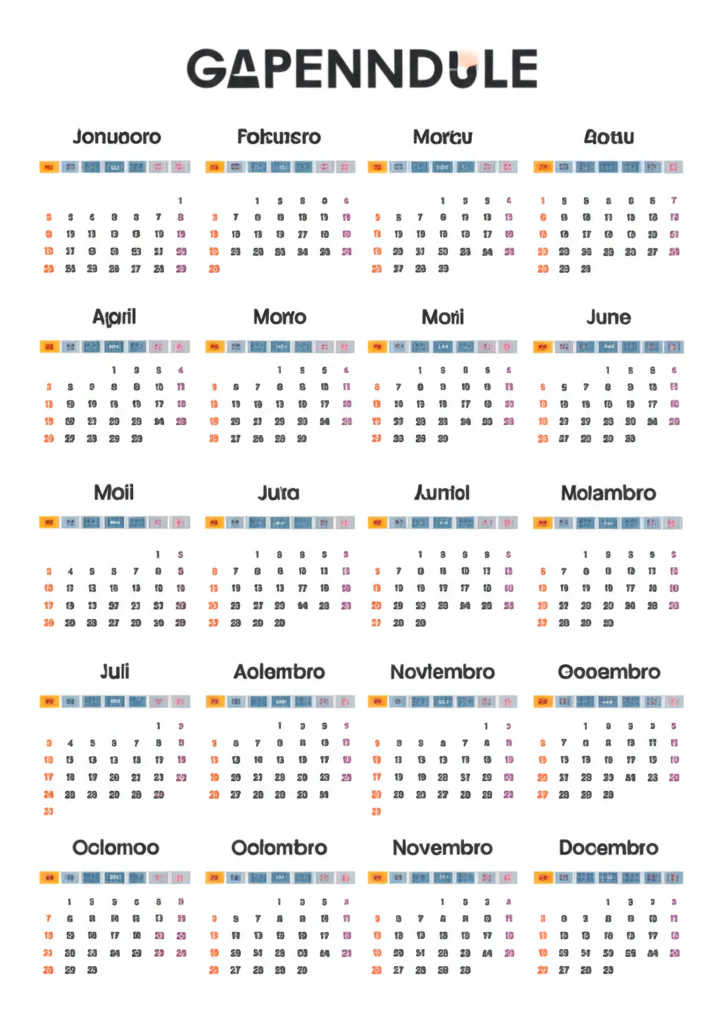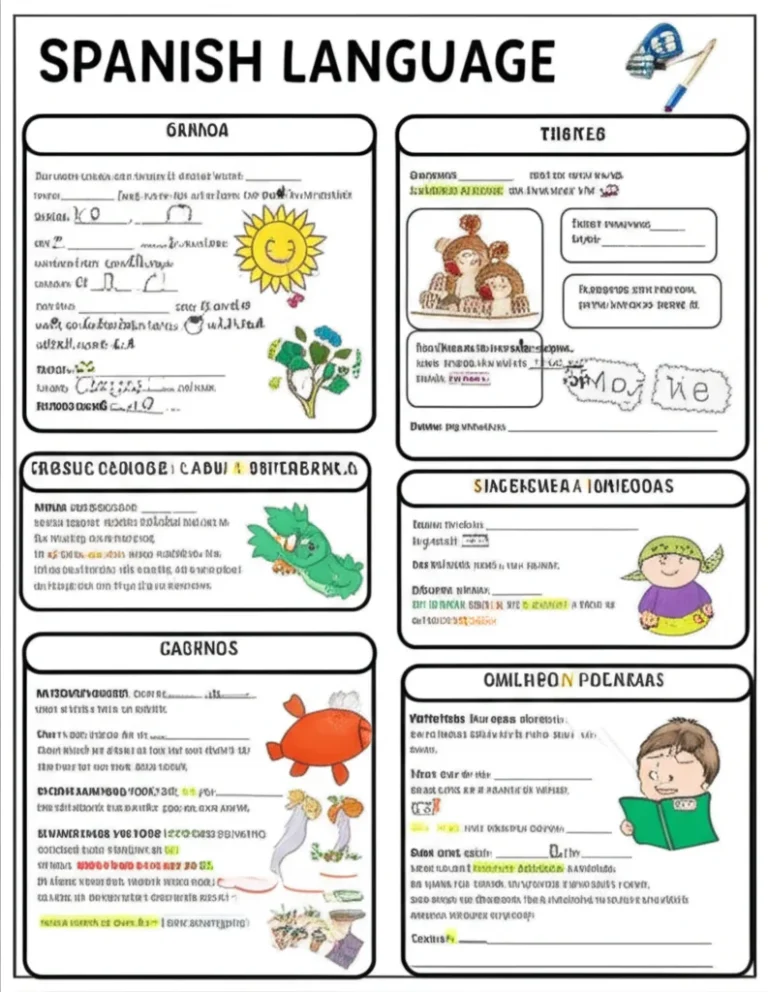Support our educational content for free when you purchase through links on our site. Learn more
2 Magical Happy Birthday in Spanish Song Lyrics 🎉 (2025)
Have you ever found yourself at a Spanish-speaking birthday party, eager to join in but stuck wondering, “How do I sing ‘Happy Birthday’ in Spanish the right way?” You’re not alone! Whether you want to serenade a friend with the heartfelt traditional “Las Mañanitas” or keep it simple with the universally loved “Feliz Cumpleaños” tune, this guide has you covered.
At Spanish Scholar™, we’ve combined decades of teaching experience and cultural insights to bring you the two most popular Spanish birthday songs, their lyrics, pronunciation tips, and the fascinating traditions behind them. Plus, we’ll share insider secrets on when to sing which song, how to nail the tricky Spanish sounds, and even how to throw an authentic Spanish-themed birthday fiesta! Ready to impress your amigos and make every birthday celebration unforgettable? Keep reading — your fiesta starts here! 🎂🎶
Key Takeaways
- “Las Mañanitas” is the traditional Mexican birthday serenade, rich in poetic lyrics and cultural significance.
- “Feliz Cumpleaños” is the simple, widely used Spanish version of the English birthday song, with regional variations across Latin America and Spain.
- Mastering pronunciation, especially the iconic “ñ” and vowel sounds, will boost your confidence and authenticity.
- Spanish birthday celebrations often include unique customs like “la mordida” (the cake face-bite) and lively piñata parties.
- Using birthday songs and phrases in Spanish is a fun way to deepen cultural connections and enhance your language skills.
Ready to sing your heart out in Spanish? Let’s dive in!
Table of Contents
- ⚡️ Quick Tips and Facts: Your “Happy Birthday” Spanish Cheat Sheet
- 🎂 The Melodious History of “Happy Birthday” in Spanish: “Las Mañanitas” Explained
- 1. 🎶 “Las Mañanitas”: The Heart of Spanish Birthday Celebrations
- 2. 🎉 “Feliz Cumpleaños”: The Universal Spanish Birthday Song
- 🎤 Pronunciation Power-Up: Sing “Happy Birthday” Like a Native!
- 🥳 Beyond the Song: Essential Spanish Birthday Phrases and Greetings
- 🎁 Gifting Etiquette and Birthday Traditions Across Spanish-Speaking Cultures
- 🎈 Hosting a “Fiesta de Cumpleaños”: Decorations, Food, and Fun
- 🌎 Connecting Through Culture: Why Learning Spanish Enhances Your Celebrations
- 💡 Making It Stick: Reinforcing Your Spanish Birthday Vocabulary and Songs
- 🗣️ Let’s Get You Talking: Applying Your New Spanish Birthday Knowledge
- 🌟 Our Team’s Favorite Birthday Anecdotes and Expert Tips
- 🎯 Conclusion: Sing Your Heart Out in Spanish!
- 🔗 Recommended Links for Your Spanish Learning Journey
- ❓ FAQ: Your Burning Questions About Spanish Birthday Songs Answered
- 📚 Reference Links: Our Sources and Further Reading
Body
⚡️ Quick Tips and Facts: Your “Happy Birthday” Spanish Cheat Sheet
¡Hola, language lovers! Welcome to the ultimate guide to singing “Happy Birthday” in Spanish, brought to you by your favorite team of profes at Spanish Scholar™. Before we dive into the mariachi-filled details, let’s get you party-ready with a quick cheat sheet. If you’re looking for the most comprehensive guide on how to say happy birthday in Spanish, you’ve come to the right place!
| Spanish Phrase/Song | English Meaning | When to Use It |
|---|---|---|
| Feliz cumpleaños | Happy birthday | The universal, go-to phrase. Perfect for cards, texts, and in-person wishes. |
| Felicidades | Congratulations | A very common and slightly more enthusiastic way to say happy birthday. |
| “Cumpleaños Feliz” | Happy Birthday (song) | The direct translation of the English song, sung to the same tune. Used widely. |
| “Las Mañanitas” | The Little Mornings | The traditional, poetic birthday song, especially beloved in Mexico. |
| ¡Que cumplas muchos más! | May you have many more! | A common and warm-hearted wish to add after the main greeting. |
| La mordida | The bite | A playful Mexican tradition where the birthday person’s face is gently pushed into the cake for the first bite! 🎂 |
🎂 The Melodious History of “Happy Birthday” in Spanish: “Las Mañanitas” Explained
Ever wondered why in some Spanish-speaking countries a beautiful serenade is sung instead of the simple “Happy Birthday” tune we know? The answer lies in a rich tapestry of cultural history, and it’s a story we at Spanish Scholar™ love to tell. While the “Feliz Cumpleaños” song is a direct and popular adaptation, the real heart of many celebrations, particularly in Mexico, is a song called “Las Mañanitas”.
A Glimpse into the Origins of a Beloved Mexican and Latin American Tradition
“Las Mañanitas,” which translates to “The Little Mornings,” is more than just a song; it’s a cultural event. As noted by experts at Llamitas Spanish, this song is traditionally sung early in the morning to wake up the birthday person, sometimes by a hired mariachi band! Its origins are a bit hazy, with roots possibly tracing back to 19th-century folk songs or even earlier Spanish musical traditions. The lyrics are poetic, referencing King David (“Rey David”), the singing of the birds at dawn, and the beauty of the day the person was born. It’s a beautiful piece of our shared Spanish Cultural Insights that turns a birthday into a truly special occasion.
1. 🎶 “Las Mañanitas”: The Heart of Spanish Birthday Celebrations
If you really want to impress a friend from Mexico, learning “Las Mañanitas” is the way to go. It shows you’ve gone the extra mile to understand their culture. It’s the difference between giving a generic greeting card and writing a heartfelt, personal note.
The Full “Las Mañanitas” Lyrics in Spanish: Sing Along!
Ready to sing? Here are the most common verses. Don’t worry, we’ll break down the meaning next!
| Spanish Lyrics |
|---|
| Estas son las mañanitas, |
| que cantaba el Rey David. |
| Hoy por ser día de tu santo, |
| te las cantamos a ti. |
| Despierta, mi bien, despierta, |
| mira que ya amaneció. |
| Ya los pajarillos cantan, |
| la luna ya se metió. |
English Translation: Unveiling the Poetic Beauty and Meaning
The beauty of “Las Mañanitas” is in its poetry. It’s not just “Happy birthday”; it’s a serenade.
| English Translation |
|---|
| These are the little mornings, |
| that King David used to sing. |
| Today, because it is your saint’s day, |
| we sing them to you. |
| Wake up, my dear, wake up, |
| look that it has already dawned. |
| The little birds are already singing, |
| the moon has already set. |
The reference to “your saint’s day” (día de tu santo) is a nod to the Catholic tradition of celebrating the feast day of the saint a person is named after, which often coincided with their birthday.
Regional Rhythms: Variations of “Las Mañanitas” Across the Spanish-Speaking World
While “Las Mañanitas” is quintessentially Mexican, its beautiful melody and sentiment have traveled. You might hear it in other parts of Central America and in communities with large Mexican populations. However, it’s not the standard in places like Spain, Argentina, or Colombia, which brings us to the other famous birthday tune…
2. 🎉 “Feliz Cumpleaños”: The Universal Spanish Birthday Song
This is the song you’re probably most familiar with, as it uses the same catchy tune as the English “Happy Birthday to You.” It’s simple, direct, and universally understood across the entire Spanish-speaking world. It’s your safest and most reliable bet if you’re not sure which song to sing!
The Simple, Sweet “Feliz Cumpleaños” Lyrics: Easy to Learn, Easy to Sing
One of the best things about this song is its simplicity. But wait! Did you know there are subtle differences depending on where you are? Let’s compare a few, drawing on insights from sources like Rocket Languages and Spanish Connect.
| Country/Region | Common Lyrics | English Translation |
|---|---|---|
| General/Spain |
Cumpleaños feliz, cumpleaños feliz, te deseamos todos, cumpleaños feliz. |
Happy birthday, happy birthday, we all wish you, happy birthday. |
| Venezuela |
Cumpleaños feliz, te deseamos a ti, cumpleaños (name), cumpleaños feliz. |
Happy birthday, we wish to you, happy birthday (name), happy birthday. |
| Argentina |
Que los cumplas feliz, que los cumplas feliz, que los cumplas (name), que los cumplas feliz. |
May you have a happy one, may you have a happy one, may you have a happy one (name), may you have a happy one. |
| Colombia |
Cumpleaños feliz, te deseamos a ti, cumpleaños (name), cumpleaños feliz. |
Happy birthday, we wish to you, happy birthday (name), happy birthday. |
As you can see, the sentiment is the same, but the wording changes slightly. It’s a fantastic example of the rich diversity within the Spanish language!
When to Choose “Feliz Cumpleaños” Over “Las Mañanitas”: A Cultural Compass
So, which song should you belt out at the next fiesta? Here’s our Spanish Scholar™ guide:
- ✅ Sing “Feliz Cumpleaños” if:
- You are in Spain, Argentina, Chile, Colombia, or most other Spanish-speaking countries.
- You are at a diverse gathering with people from various Latin American countries.
- You’re a beginner and want the easiest version to remember!
- ✅ Sing “Las Mañanitas” if:
- The birthday person is from Mexico or has a strong Mexican heritage.
- You want to offer a more traditional, poetic, and heartfelt serenade.
- ❌ Our Pro Tip: Don’t stress too much! The effort to sing in Spanish will always be appreciated, no matter which version you choose. The joy is in the sharing.
🎤 Pronunciation Power-Up: Sing “Happy Birthday” Like a Native!
Alright, you’ve got the lyrics. Now let’s make sure you sound like a pro and not like you’re ordering from a tourist menu! Proper pronunciation is key to confidence in any Spanish Language Learning journey.
Mastering Spanish Sounds: Tips for Perfect Delivery of Birthday Wishes
Let’s break down the key phrase: Feliz Cumpleaños (feh-LEES COOM-play-ahn-yohs).
- Fe-liz: The ‘z’ in Latin America sounds like an ‘s’. In many parts of Spain, however, it’s pronounced like a ‘th’ sound, as noted by Spanish Connect. So, “feh-LEETH.” It’s a fun regional difference to be aware of!
- Cum-ple-a-ños: The ‘ñ’ is a signature Spanish sound. Think of the ‘ny’ in “canyon.” It’s not “an-yos,” but “ahn-yos.” Practice it! It’s a sound that will instantly make your Spanish sound more authentic.
- Vowels are Key: Spanish vowels are pure and short. ‘A’ is always “ah,” ‘E’ is “eh,” ‘I’ is “ee,” ‘O’ is “oh,” and ‘U’ is “oo.” No complex diphthongs like in English. Keep them crisp!
Practice Your Pronunciation with Spanish Scholar™ Audio Guides
The best way to nail pronunciation is to listen and repeat. At Spanish Scholar™, we build audio guides into our lessons for this very reason. You can also use fantastic apps like Duolingo or Babbel, which have speech recognition tools to help you practice. The goal is to get comfortable speaking aloud, as this builds muscle memory for your mouth and boosts your confidence for real-world Spanish Conversation Practice.
🥳 Beyond the Song: Essential Spanish Birthday Phrases and Greetings
The song is the main event, but what do you write in the card? Or say when you hand over the gift? We’ve got you covered with this handy list of essential birthday vocabulary.
Wishing Well: Common Expressions for the Birthday Person
- ¡Te deseo un muy feliz cumpleaños! (I wish you a very happy birthday!)
- ¡Que tengas un día maravilloso! (Have a wonderful day!)
- ¡Te deseo lo mejor en tu día! (I wish you the best on your day!)
- ¡Feliz cumpleaños atrasado! (Happy belated birthday!) – For when you’re a little late to the party. It happens!
- ¡Feliz cumpleaños adelantado! (Happy early birthday!) – For when you’re ahead of the game.
Responding to Birthday Wishes: “Gracias” and More!
If it’s your birthday, you’ll need to know how to respond to all the lovely wishes:
- ¡Muchas gracias! (Thank you very much!)
- ¡Gracias por tus buenos deseos! (Thanks for your good wishes!)
- ¡Qué amable de tu parte! (How kind of you!)
🎁 Gifting Etiquette and Birthday Traditions Across Spanish-Speaking Cultures
A birthday celebration is so much more than a song and a cake. It’s a cultural mosaic of traditions that are fascinating and fun to be a part of.
The Piñata Phenomenon: More Than Just Candy!
You’ve probably seen a piñata, but do you know the tradition? It’s a staple at children’s parties in Mexico and other parts of Latin America. A brightly colored papier-mâché figure (often a star or a donkey) is filled with candy and toys. Blindfolded children take turns hitting it with a stick until it breaks, showering everyone with treats. It symbolizes triumph over temptation and the rewards that follow.
Looking to host your own piñata party? You can find amazing, authentic piñatas online.
👉 Shop Piñatas on: Amazon | Walmart | Etsy
Cake Cutting and “La Mordida”: A Sweet (and Messy) Tradition
Here’s a tradition that always gets a laugh! In Mexico, after everyone sings “Las Mañanitas” or “Feliz Cumpleaños,” the crowd will often chant, “¡Mordida! ¡Mordida!” This is the cue for the birthday person to take the first bite of the cake—hands-free! As they lean in, a mischievous friend or family member will gently push their face into the icing. It’s a hilarious, memorable moment of shared fun.
Other Unique Celebrations from Mexico to Spain and Beyond
- La Quinceañera: As mentioned by Spanish Connect, this is a massive celebration for a girl’s 15th birthday, marking her transition from childhood to womanhood. It’s a huge event, often as elaborate as a wedding, with a special dress, a church service, and a lavish party.
- Serenades (Serenatas): The tradition of waking someone with music isn’t limited to “Las Mañanitas.” In various countries, hiring musicians or simply gathering friends to sing outside the birthday person’s window is a deeply romantic and cherished gesture.
🎈 Hosting a “Fiesta de Cumpleaños”: Decorations, Food, and Fun
Inspired to throw your own Spanish-themed birthday bash? ¡Excelente! Here are a few tips from our team to make it authentic and unforgettable.
Decoraciones Festivas: Setting the Mood for a Spanish Birthday Party
Think vibrant and colorful!
- Papel Picado: These are intricately cut tissue paper banners that add an instant festive and authentic Mexican flair.
- Globos y Guirnaldas: Balloons and streamers are universal, but go for bright, bold color palettes.
- Flores: Fresh flowers, especially for an adult’s party, add a touch of natural beauty.
👉 Shop Fiesta Decorations on: Amazon | Etsy
Sabores de Fiesta: Must-Try Birthday Foods and Drinks
- El Pastel: The cake is central! A “pastel de tres leches” (three milks cake) is a classic, moist, and delicious choice popular throughout Latin America. And don’t forget the chant for cake: “¡Ya queremos pastel, ya queremos pastel, aunque sea un pedacito, pero queremos pastel!” (We want cake now, we want cake now, even if it’s a little piece, we want cake!).
- Comida: Tacos, tamales, empanadas, and ceviche are all crowd-pleasers.
- Bebidas: “Aguas frescas” (fresh fruit waters) like horchata or jamaica (hibiscus) are refreshing and perfect for all ages.
Juegos y Actividades: Keeping the Party Lively the Spanish Way
Music is non-negotiable! Create a playlist with a mix of salsa, cumbia, merengue, and reggaeton to get everyone dancing. Of course, the piñata is a must for a kid’s party. For adults, simply good food, good music, and great conversation are the recipe for success.
🌎 Connecting Through Culture: Why Learning Spanish Enhances Your Celebrations
At the end of the day, learning the lyrics to a birthday song is about more than just words. It’s about connection. It’s about showing someone you care enough to celebrate them in a way that is meaningful to their heritage and identity.
Our Personal Journey: From Awkward Silence to Joyful Singing in Spanish
One of our teachers, Maria, shares this story: “My first time at a birthday party in Spain, I just stood there silently while everyone sang ‘Cumpleaños Feliz.’ I felt like such an outsider. I vowed to learn it for the next party. A few months later, I sang along, stumbling over some words, but the birthday girl’s grandmother gave me the biggest, warmest smile. In that moment, I wasn’t a foreigner anymore; I was part of the celebration. That’s the power of language.” It’s these moments of connection that are the true reward of your Spanish Language Learning adventure.
💡 Making It Stick: Reinforcing Your Spanish Birthday Vocabulary and Songs
You’ve learned a lot! But how do you make sure it stays in your brain for the next fiesta? Practice, practice, practice!
Spanish Scholar™ Reinforcement Activities: Practice Makes Perfect!
- Create a Birthday Playlist: Find “Las Mañanitas” (we love versions by Vicente Fernández) and various “Cumpleaños Feliz” songs on Spotify or YouTube. Listen to them in the car or while you’re cooking.
- Digital Flashcards: Use an app like Anki to create a deck with the new Spanish Vocabulary you’ve learned: pastel, regalos, globos, vela, etc.
- Watch and Learn: Look for YouTube videos of real birthday parties in Mexico or Spain. It’s a fantastic way to see these traditions in action. The video we’ve featured in this article is a great starting point, as it wishes for “MUCHOS REGALOS A TI” (Plenty of presents for you) and “MUCHOS ABRAZOS Y BESOS” (Plenty of hugs and kisses), capturing the warm spirit of the celebration. See it here.
- Explore More Resources: Check out our full library of Spanish Language Resources to keep your learning journey going.
🗣️ Let’s Get You Talking: Applying Your New Spanish Birthday Knowledge
Theory is great, but language is meant to be used! We challenge you to use what you’ve learned this week. Find a friend with a birthday coming up and send them a text in Spanish. Record yourself singing one of the songs. The more you use it, the more natural it will become. You’ve got this!
🌟 Our Team’s Favorite Birthday Anecdotes and Expert Tips
Before we wrap up, here are a few final thoughts and stories from our team to yours:
- Javier’s Tip: “When you give a gift, it’s common to say, ‘Espero que te guste’ (I hope you like it). It’s a small touch that adds a lot of warmth.”
- Sofia’s Anecdote: “I once saw a groom have a mariachi band surprise his new bride by singing ‘Las Mañanitas’ to her at their wedding reception because her birthday was the next day. There wasn’t a dry eye in the house. It’s that powerful.”
- Our #1 Rule: Enthusiasm is more important than perfection. A joyful, heartfelt, and slightly off-key “Feliz Cumpleaños” is always, always better than a perfectly pronounced silence. So go on and sing your heart out
🎯 Conclusion: Sing Your Heart Out in Spanish!
Well, amigos, we’ve journeyed through the vibrant world of Spanish birthday songs, traditions, and celebrations. From the poetic serenade of “Las Mañanitas” to the universally beloved “Feliz Cumpleaños”, you now have the tools to bring joy and cultural connection to any birthday fiesta. Remember Maria’s story—language is the bridge that turns strangers into family, and your effort to sing in Spanish will be cherished far beyond the notes you hit.
Whether you choose the heartfelt morning serenade or the catchy birthday tune, your enthusiasm and respect for the culture will shine through. And if you ever find yourself wondering which song to sing or how to pronounce those tricky Spanish sounds, come back to this guide or explore our Spanish Conversation Practice resources for a refresher.
So, go ahead—grab that mic, warm up your vocal cords, and make your next birthday celebration unforgettable with a Spanish twist. ¡Feliz cumpleaños y que los cumplas feliz! 🎉🎶
🔗 Recommended Links for Your Spanish Learning Journey
Ready to dive deeper or throw your own fiesta? Here are some hand-picked resources and products to help you celebrate in style:
-
Authentic Piñatas:
Amazon Piñata Selection | Walmart Piñata Options | Etsy Handmade Piñatas -
Fiesta Decorations:
Amazon Fiesta Party Decorations | Etsy Papel Picado Banners -
Spanish Birthday Books for Kids:
“Las Mañanitas” by Susie Jaramillo (Canticos) | “¡Feliz cumpleaños!” by Dr. Seuss | “The Birthday Box / Mi Caja De Cumpleaños” by Leslie Patricelli -
Spanish Learning Apps with Pronunciation Practice:
Duolingo Spanish Course | Babbel Spanish Lessons -
“Las Mañanitas” Music Versions:
Vicente Fernández – Las Mañanitas on Spotify
❓ FAQ: Your Burning Questions About Spanish Birthday Songs Answered
How do you say happy birthday in Spanish song lyrics?
The most common phrase is “Feliz cumpleaños”, which literally means “happy birthday.” The traditional Spanish birthday song lyrics often use this phrase repeatedly, such as in the popular tune:
Cumpleaños feliz,
Cumpleaños feliz,
Te deseamos (name),
Cumpleaños feliz.
Alternatively, in Mexico and some other countries, the poetic “Las Mañanitas” is sung, which is a longer serenade celebrating the birthday person.
What are the most popular happy birthday songs in Spanish?
Two main songs dominate:
- “Feliz Cumpleaños”: Sung to the same tune as the English “Happy Birthday to You,” widely used across Spanish-speaking countries.
- “Las Mañanitas”: A traditional Mexican birthday serenade, often sung early in the morning or before the cake cutting.
Regional variations exist, such as Argentina’s “Que los cumplas feliz” and Colombia’s extended verses wishing many more birthdays.
Can you translate the happy birthday song lyrics into Spanish?
Yes! The English “Happy Birthday to You” has a direct Spanish equivalent called “Cumpleaños Feliz”, which is a simple and literal translation. For example:
- English: Happy birthday to you
- Spanish: Cumpleaños feliz
However, “Las Mañanitas” is not a direct translation but a culturally rich alternative with poetic lyrics celebrating the birthday person.
Where can I find Spanish happy birthday song lyrics for beginners?
Great beginner-friendly lyrics can be found on sites like Spanish Scholar™, Rocket Languages, and Llamitas Spanish. These resources provide both Spanish and English translations, audio guides, and pronunciation tips to help learners.
What is the traditional Spanish happy birthday song called?
The traditional Mexican birthday song is called “Las Mañanitas.” It is a serenade that dates back centuries and is often sung by mariachis or family members early in the morning on the birthday.
How can learning happy birthday songs in Spanish help with language skills?
Learning birthday songs in Spanish helps with:
- Vocabulary acquisition: Words related to celebrations, family, and emotions.
- Pronunciation practice: Songs reinforce correct sounds and rhythm.
- Cultural understanding: Songs like “Las Mañanitas” provide insight into traditions.
- Confidence building: Singing aloud reduces fear of speaking and encourages conversational practice.
Are there different versions of happy birthday songs in Spanish-speaking countries?
Absolutely! While “Feliz Cumpleaños” is widespread, many countries have their own versions or additional verses. For example:
- Argentina: Uses “Que los cumplas feliz” instead of repeating “Feliz cumpleaños.”
- Colombia: Adds verses wishing the person to live until the year 3000.
- Chile and Spain: Slightly different lyrics but similar melody.
- Mexico: Prefers “Las Mañanitas” as the traditional serenade.
These variations reflect the rich diversity of the Spanish language and culture.
📚 Reference Links: Our Sources and Further Reading
- Rocket Languages – Happy Birthday in Spanish
- Spanish Connect – Happy Birthday Song in Spanish
- Llamitas Spanish – Spanish Birthday Printables and Lyrics
- Vicente Fernández Official Spotify
- Duolingo Spanish Course
- Babbel Spanish Lessons
- Amazon – Spanish Birthday Books
- Etsy – Papel Picado Banners
For a delightful dive into Spanish birthday songs and culture, we highly recommend exploring the Llamitas Spanish® resources, which offer beautifully crafted bilingual materials perfect for learners of all ages.




